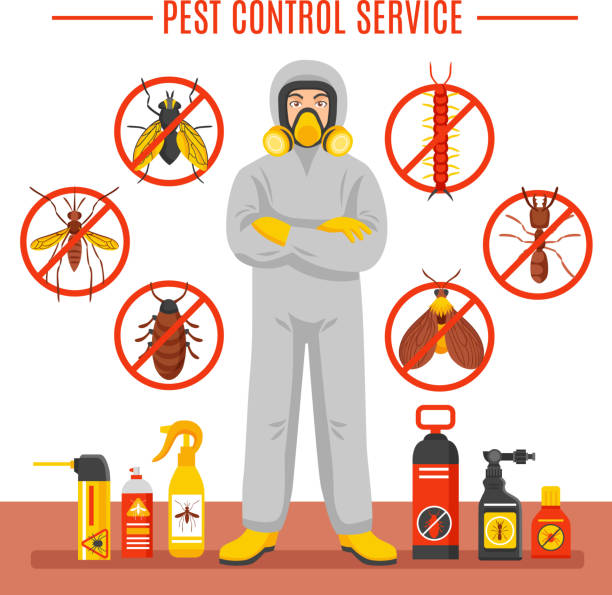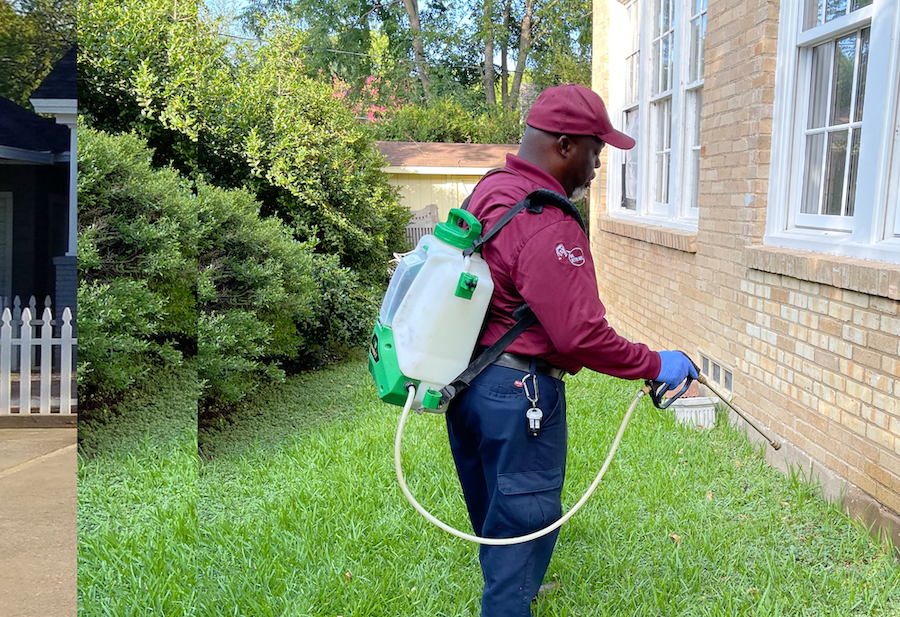Pest Control solutions to protect your home from harmful insects.
Pest Control solutions to protect your home from harmful insects.
Blog Article
Eco-Friendly Parasite Control Approaches for Taking Care Of Wild Animals in Urban Locations
Urban locations usually discover themselves at the crossway of human task and wild animals, leading to special obstacles in insect administration. Environmentally friendly strategies emphasize sustainable conjunction, employing methods such as habitat alteration and all-natural repellents to mitigate human-wildlife disputes. These methods not only protect the atmosphere however additionally enhance area engagement in wild animals management. As metropolitan populaces continue to expand, understanding the characteristics of wildlife interactions comes to be significantly essential. What cutting-edge techniques can be executed to guarantee both environmental equilibrium and urban safety and security? Discovering this inquiry reveals a compelling landscape of possible solutions.
Comprehending Urban Wildlife Dynamics
Recognizing Urban Wildlife Dynamics is important for establishing reliable and environment-friendly insect control techniques. Urban areas are significantly coming to be habitats for numerous wildlife varieties, driven by aspects such as environment fragmentation, food schedule, and human encroachment. Identifying these characteristics enables a nuanced strategy to pest administration that lines up with eco-friendly concepts.
Urban wild animals commonly consists of species such as raccoons, squirrels, and birds, which adapt to city atmospheres, locating particular niches in environment-friendly areas, parks, and also household areas. Their visibility can result in conflicts with people, especially when they exploit personnels for food and shelter. Understanding the actions and eco-friendly roles of these species notifies approaches that reduce negative communications while advertising biodiversity.
In addition, acknowledging the interdependencies within city communities assists in identifying essential locations for environment preservation and reconstruction. This knowledge contributes to the development of integrated insect monitoring (IPM) methods that consider the ecological balance, thereby lowering reliance on dangerous chemicals. By fostering conjunction between people and metropolitan wild animals, cities can develop much healthier environments that profit both citizens and local ecosystems, leading the way for lasting city living.
All-natural Repellents and Deterrents
Natural repellents and deterrents provide a sustainable option to traditional insect control techniques by utilizing the power of nature to maintain undesirable species away. These environment-friendly remedies commonly make use of plant-based active ingredients, essential oils, and other naturally occurring materials that hinder pests without hurting the atmosphere.
One effective all-natural repellent is peppermint oil, which is recognized to repel rodents and pests. Its strong scent is unpleasant to several bugs, making it a preferred choice for urban setups. Likewise, vinegar and citrus peels can offer as deterrents, as their solid smells are typically unattractive to various wildlife.
In addition, diatomaceous planet is an all-natural powder that can be spread in areas find more information susceptible to parasite activity, properly drying out and discouraging pests without presenting risks to non-target types. Furthermore, garlic sprays and neem oil are recognized for their capacity to drive away a wide variety of bugs, consisting of both pests and bigger wild animals.
Executing these natural repellents not only decreases reliance on chemical pesticides however additionally promotes a much healthier urban ecosystem, promoting an extra balanced conjunction in between people and wild animals. By using these techniques, city areas can successfully manage parasite populaces while lessening ecological influence.
Habitat Adjustment Strategies
Reliable habitat alteration methods play a vital duty in lasting insect administration by changing the setting to make it much less for pest problems. By recognizing the ecological dynamics of city locations, residential property proprietors can apply calculated alterations that discourage insects while promoting biodiversity.
(Ant Control)One key strategy entails preserving appropriate hygiene. This includes normal waste elimination, safeguarding garbage can, and eliminating standing water to minimize breeding sites for insects and rodents. In addition, landscaping methods such as choosing indigenous plants can boost environmental equilibrium, supplying environments for helpful microorganisms while minimizing sources for parasites.
One more essential approach is to seal entry factors in structures. Examining and fixing splits in foundations, walls, and home windows can substantially lower pest access. Developing physical obstacles, such as fences or plant buffers, can inhibit wildlife activity into human-inhabited areas.
Integrated Parasite Management Practices
Structure upon habitat adjustment strategies, integrated bug monitoring (IPM) methods offer an alternative strategy to regulating insect populations while decreasing ecological effect. IPM integrates various approaches, consisting of organic, cultural, mechanical, and chemical controls, to accomplish efficient insect administration.
Biological control entails the intro of natural predators or bloodsuckers to lower pest populaces. Social practices, such as crop rotation and cleanliness, disrupt pest life cycles and lessen their environments - Pest control service. Mechanical controls, like traps and obstacles, give immediate remedy for pest stress without chemical intervention
Chemical controls are utilized as a last hope, focusing on targeted applications that restrict harm to non-target varieties and the setting. The choice of eco friendly pesticides, when needed, is essential to the IPM framework. In addition, keeping an eye on parasite populations and analyzing prospective damage helps notify decision-making, making sure that interventions are prompt and efficient.
Area Involvement and Education And Learning

(Bed Bug Exterminator)Workshops and informative sessions can furnish homeowners with understanding regarding indigenous species, environment conservation, and reliable non-toxic insect administration strategies. Cooperation with schools, local organizations, and federal government firms better enhances educational outreach, making sure that crucial information reaches diverse audiences.
Furthermore, community-led efforts, such as neighborhood clean-up days and habitat reconstruction tasks, not just promote biodiversity however likewise reinforce community ties. Pest control service. By encouraging homeowners to share their experiences and observations, neighborhoods can establish targeted approaches that address specific local pest issues
Integrating feedback from citizens right into parasite administration prepares enables an extra receptive and adaptive approach to wildlife obstacles. Inevitably, informed and engaged communities are crucial to achieving long-lasting success in environment-friendly bug control, bring about much healthier urban atmospheres that respect both human and environmental demands.

Final Thought
In verdict, environmentally friendly parasite control approaches deal lasting remedies for managing city wild animals. By prioritizing environment modification, making use of natural repellents, and carrying out incorporated insect administration practices, neighborhoods can foster an unified conjunction with regional animals.
Report this page